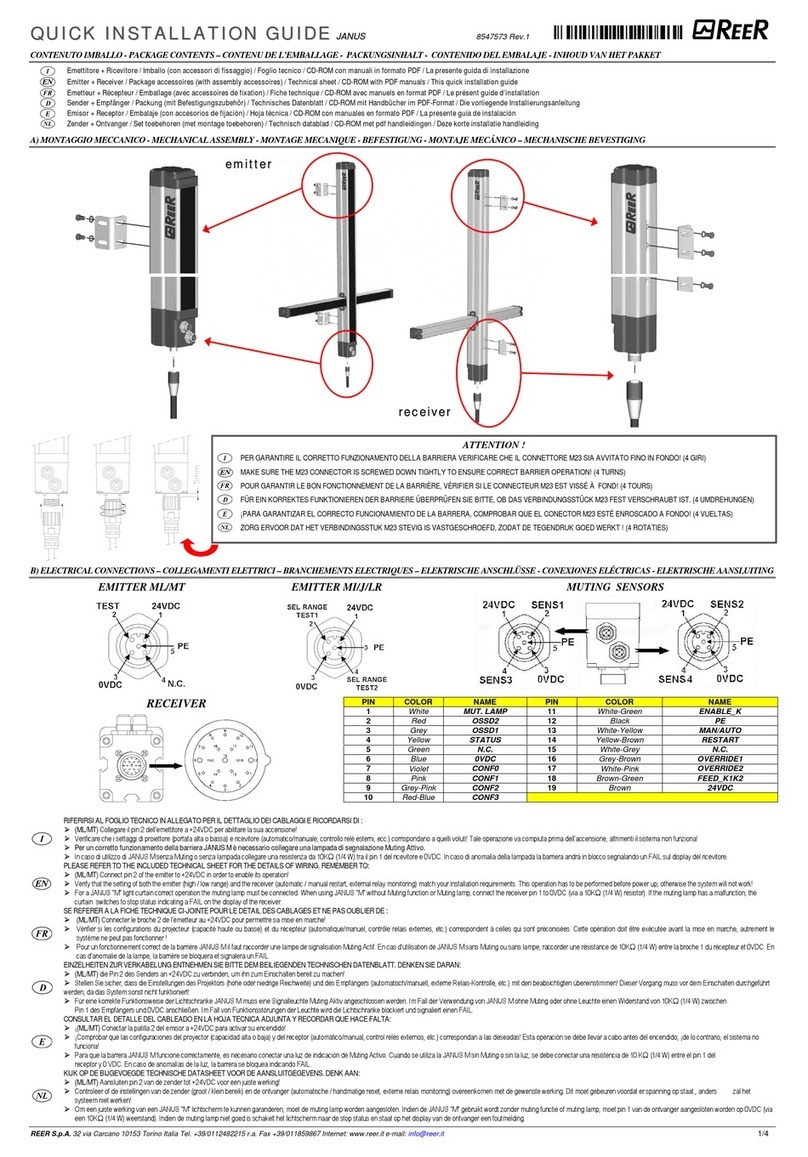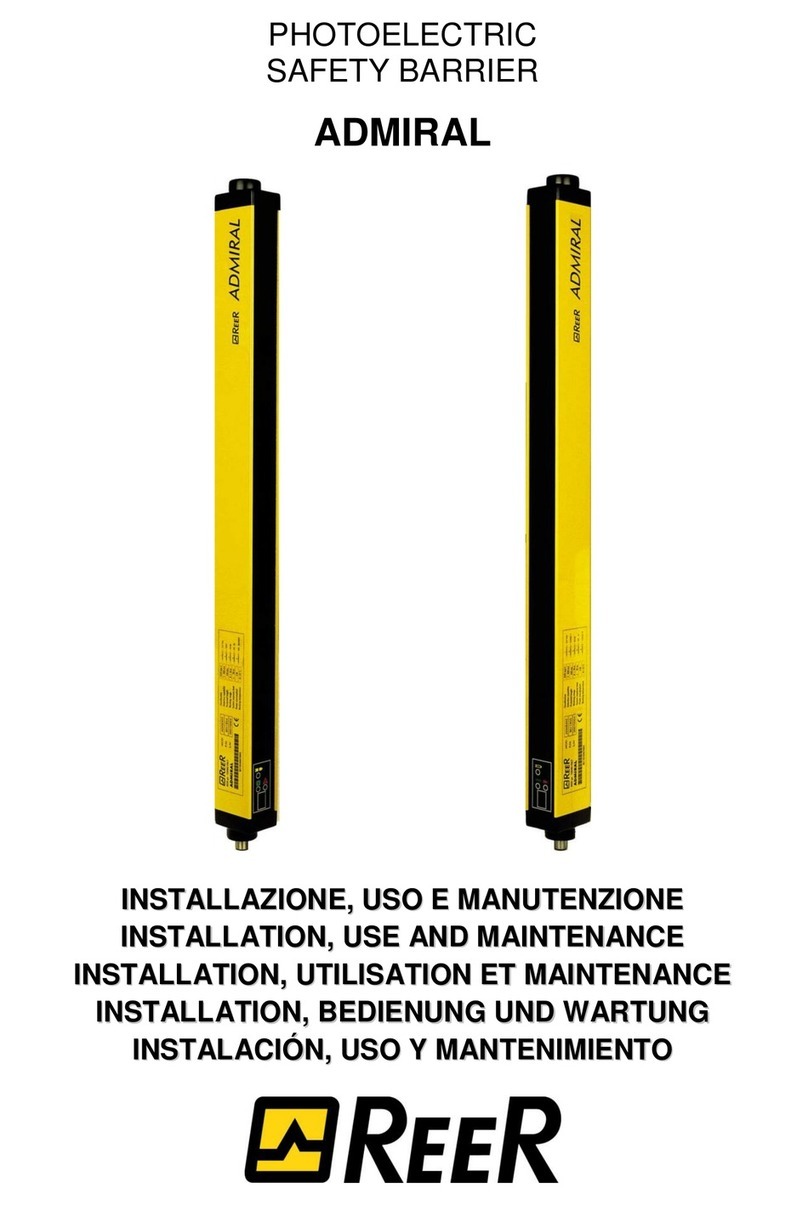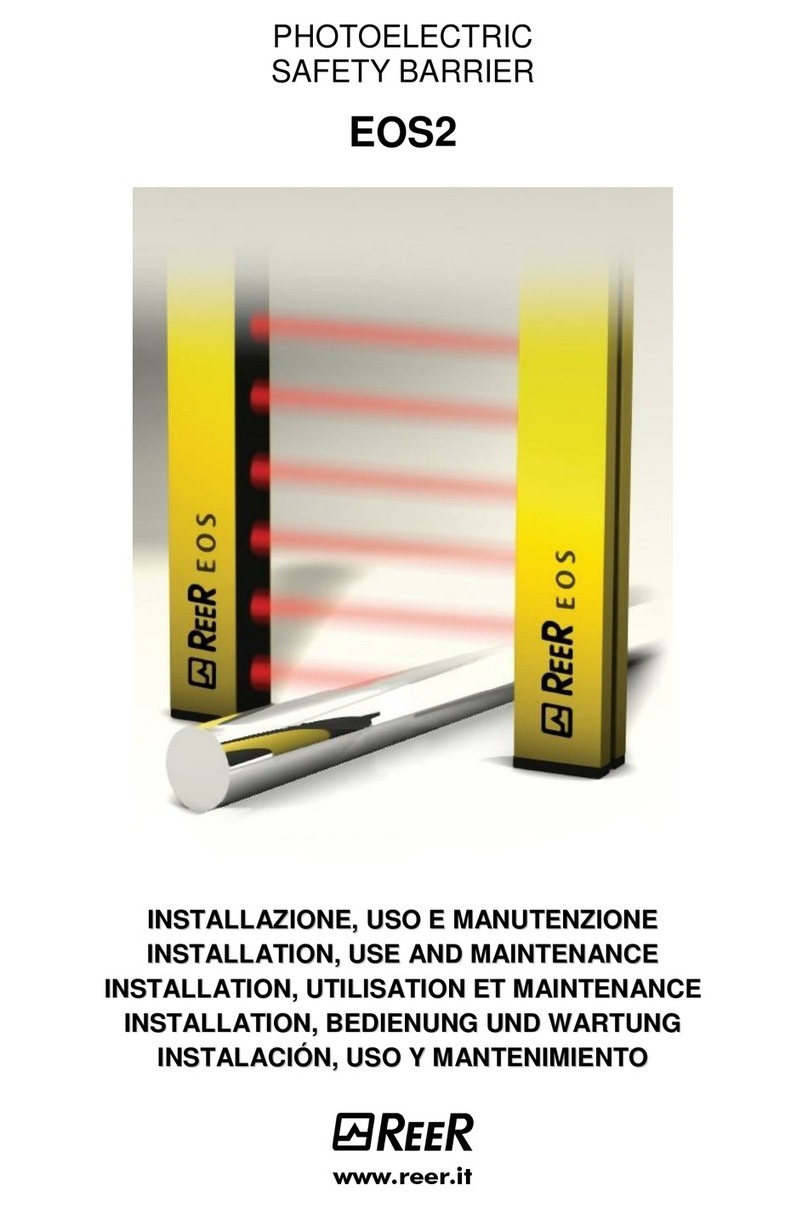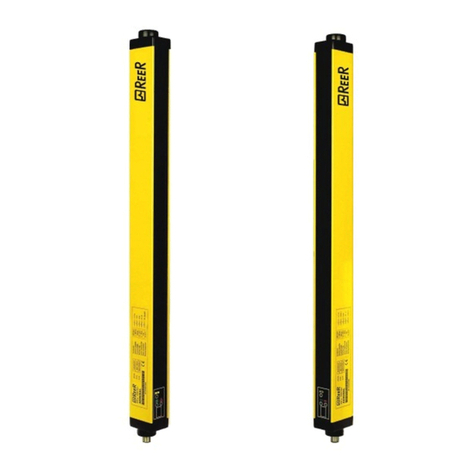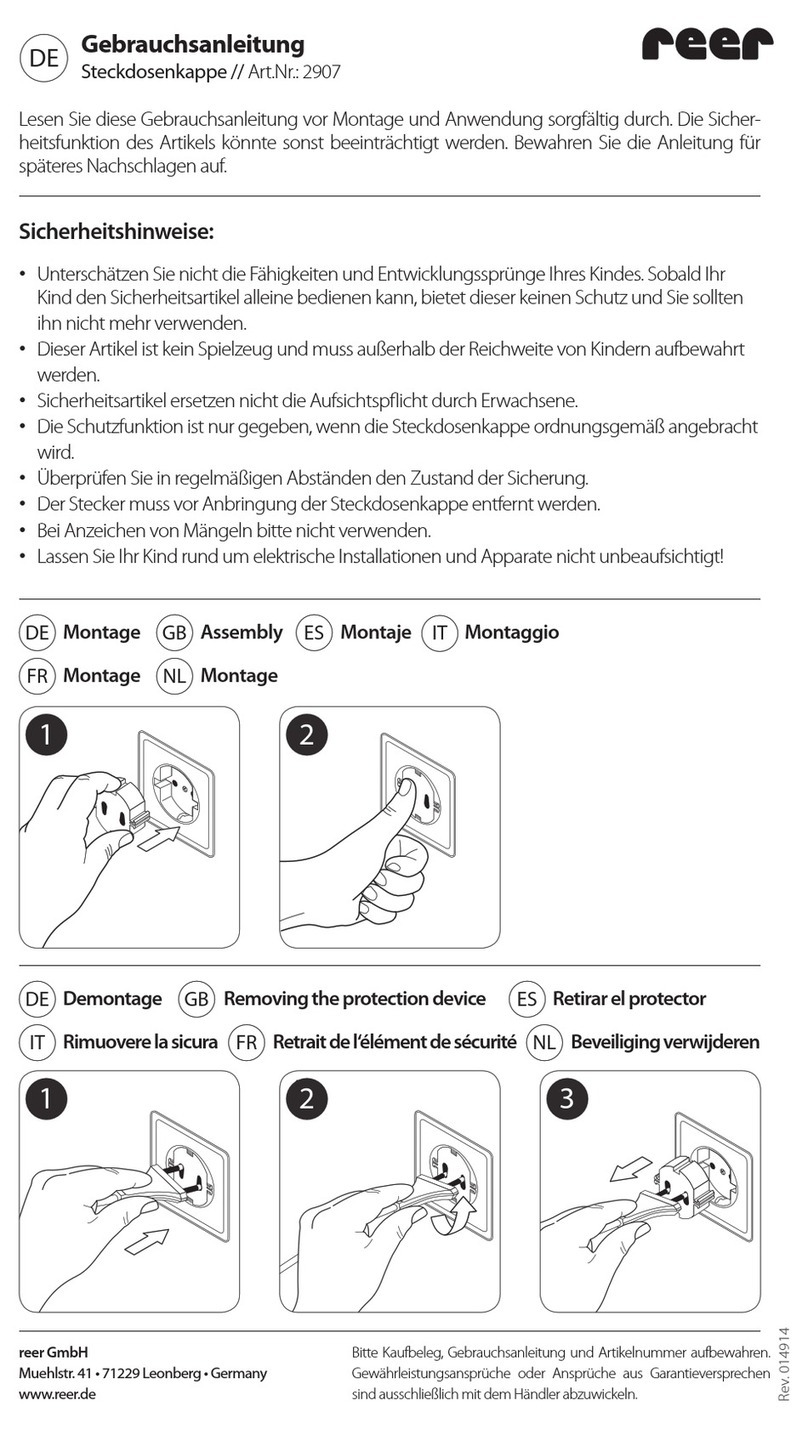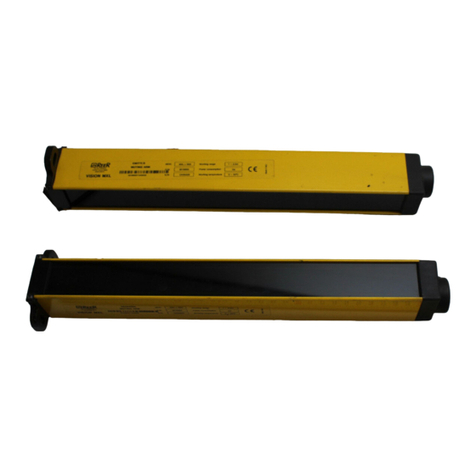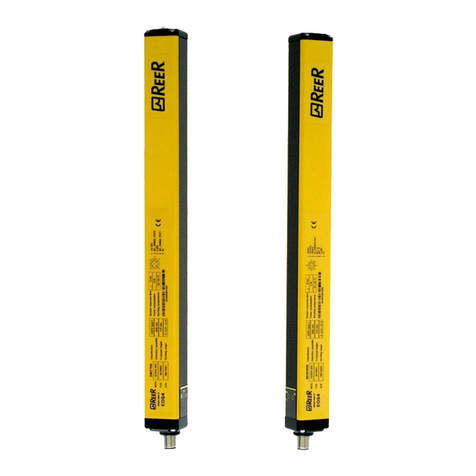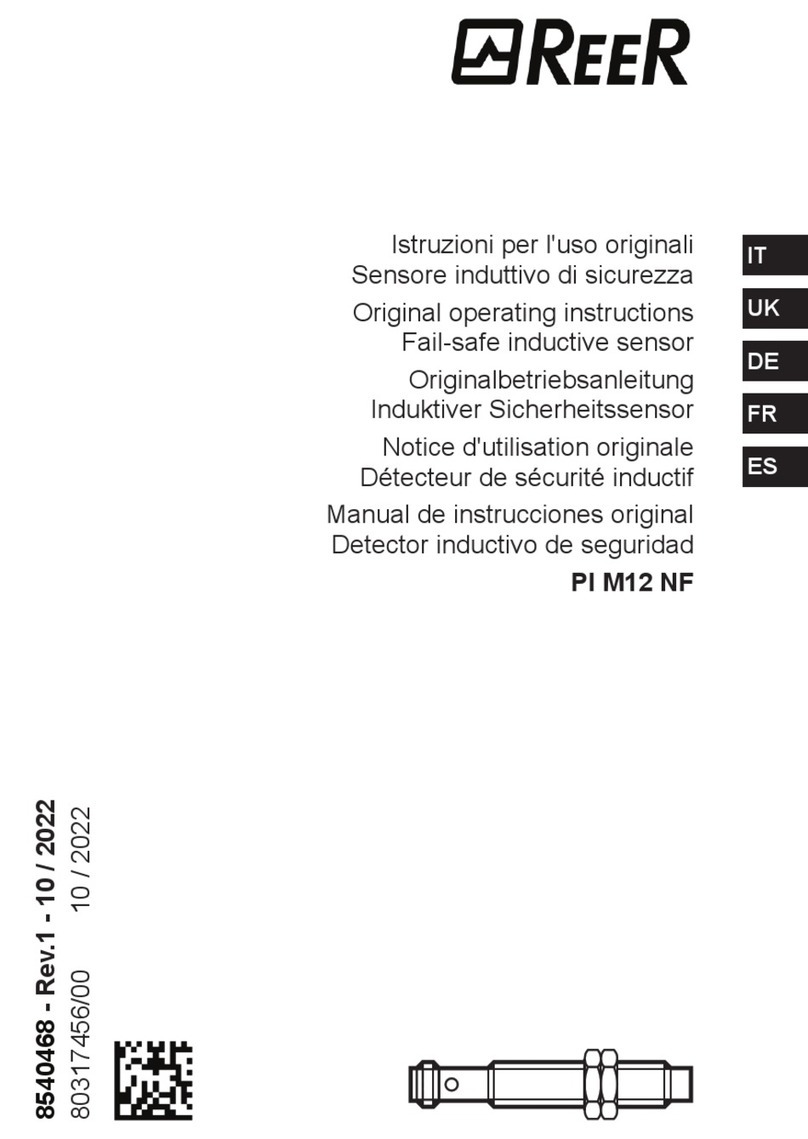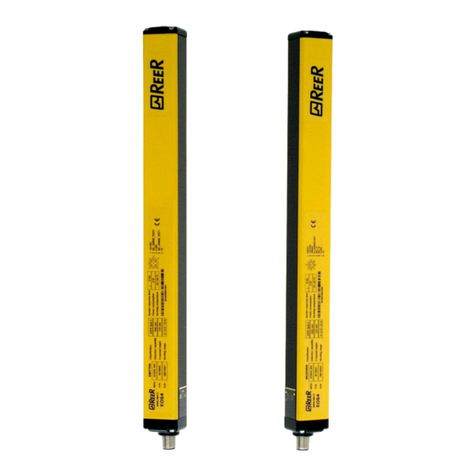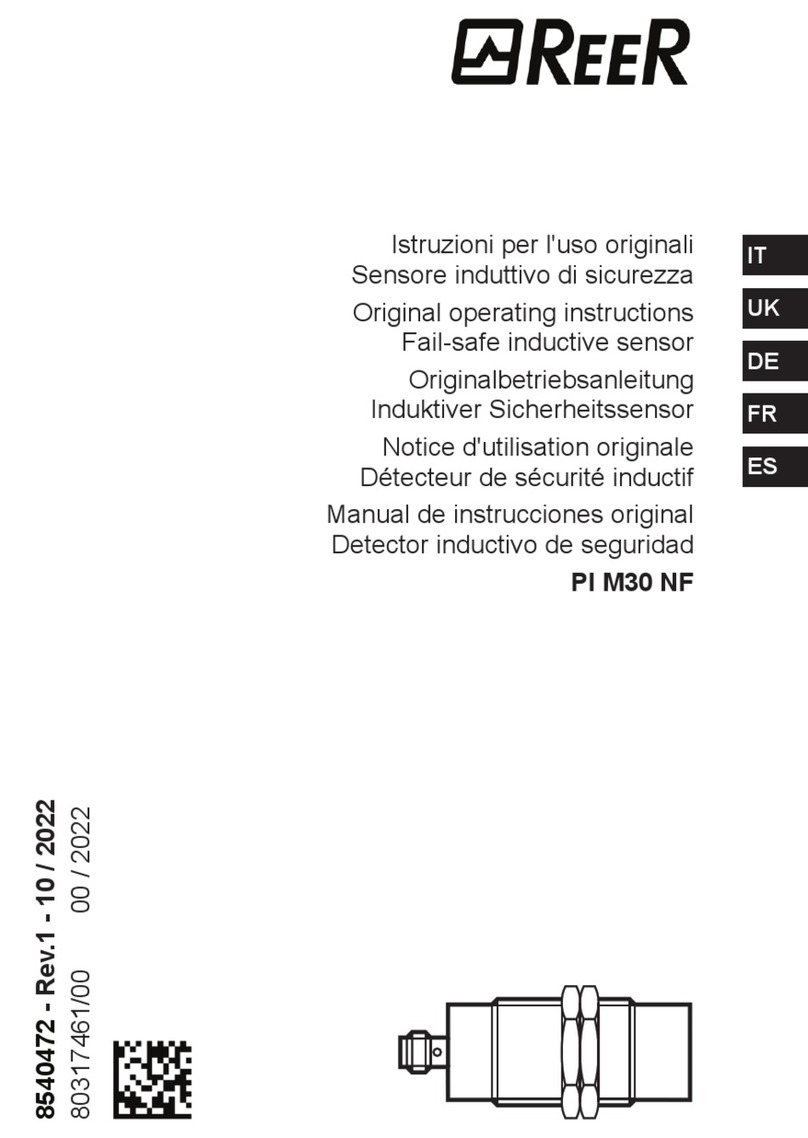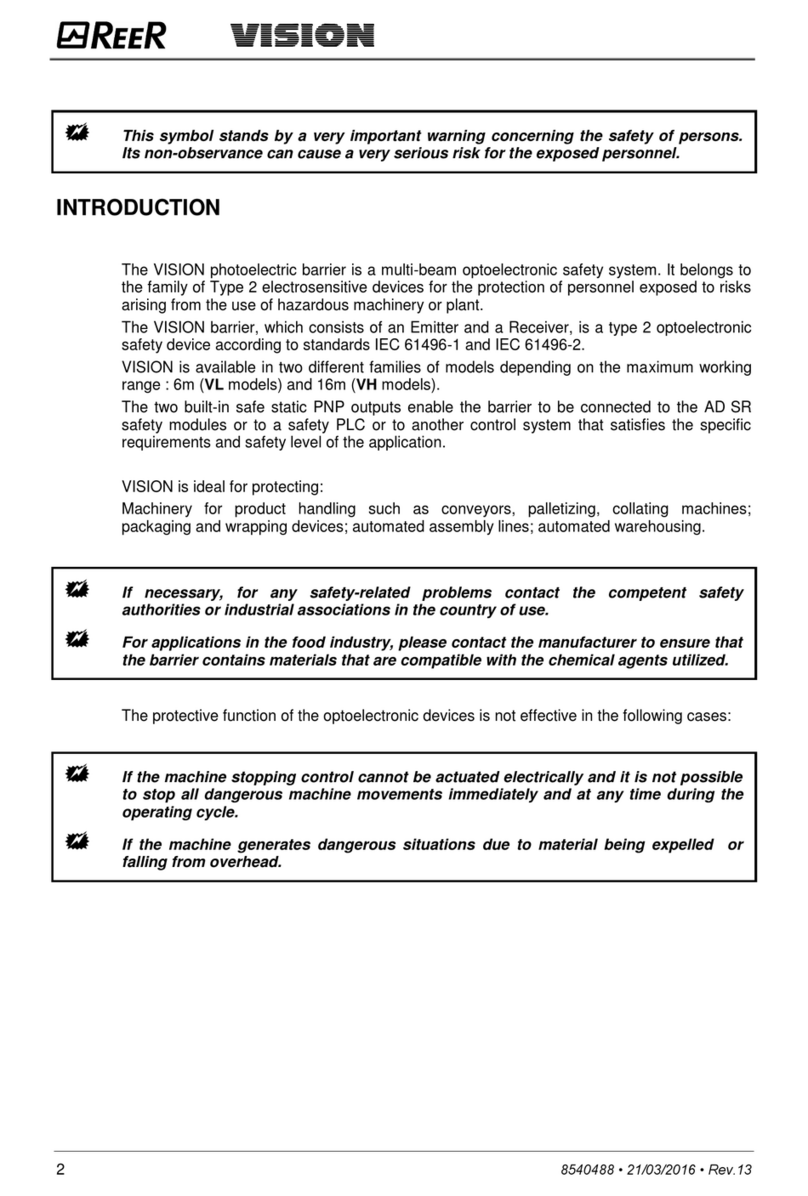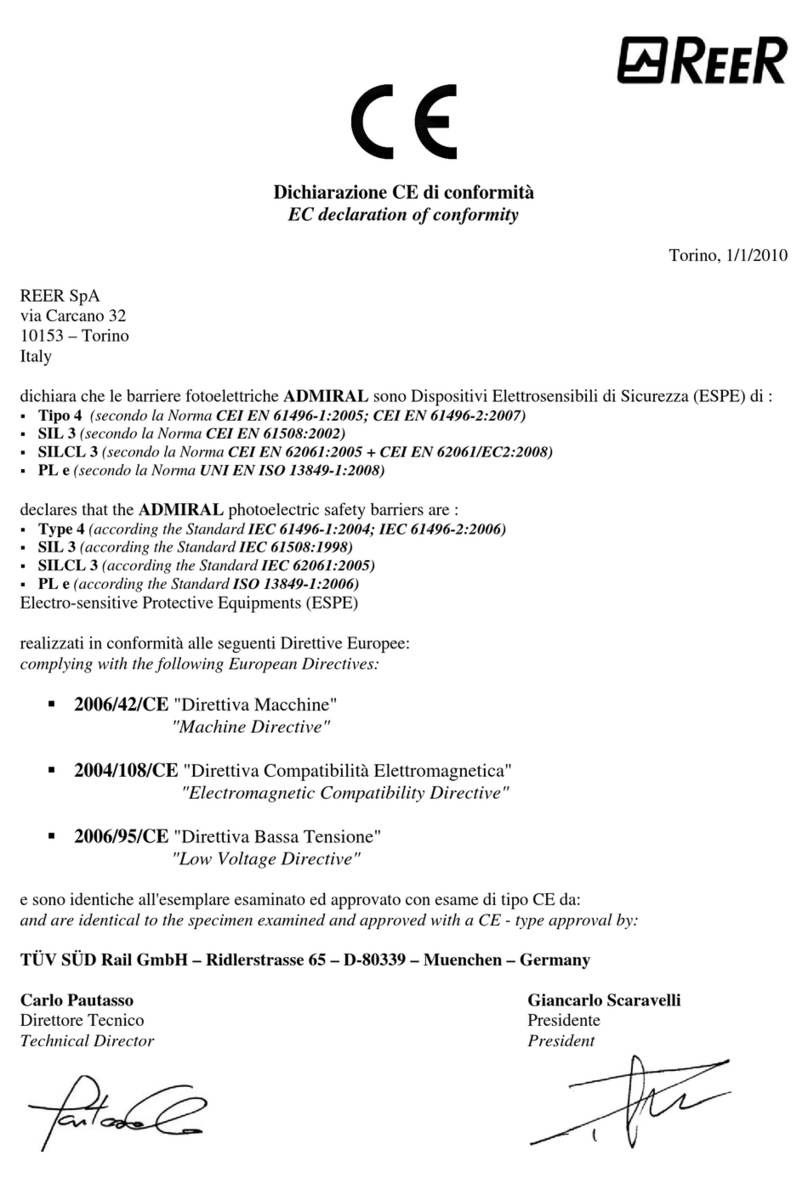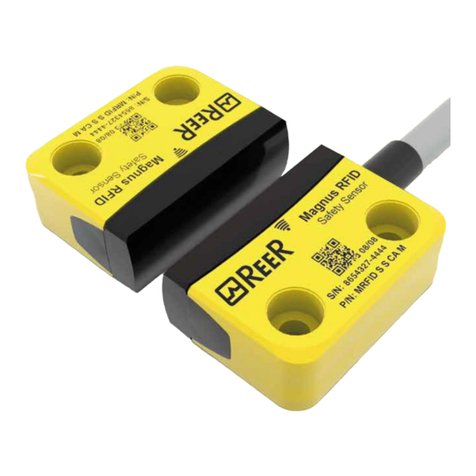TYPE 4 SAFETY LIGHT CURTAIN
JANUS
SUMMARY
INTRODUCTION ............................................................................................................................................... 3
PRINCIPLE OF OPERATION........................................................................................................................... 4
LIGHT CURTAIN............................................................................................................................................ 4
MUTING FUNCTION ..................................................................................................................................... 5
SERIES "ML" - PREASSEMBLED KIT OF JANUS LIGHT CURTAIN AND SENSOR ELEMENT “Ml
S” Integrated Muting sensors –only for one-way openings with pallet exit......................................... 5
SERIES "MT" - KIT PREASSEMBLED OF JANUS LIGHT CURTAIN AND SENSORS ELEMENTS
“MT SI” and “MT SE” Integrated Muting sensors – for two-way openings with pallet entrance/exit. .. 6
SERIES "MT S4" - KIT PREASSEMBLED OF JANUS LIGHT CURTAIN AND SENSORS
ELEMENTS “MT S” Integrated Muting sensors – for two-way openings with pallet entrance/exit. .... 6
SERIES "ML S2" - KIT PREASSEMBLED OF JANUS LIGHT CURTAIN AND SENSORS
ELEMENTS “ML S” Integrated Muting sensors – for one-way openings with pallet exit. ................... 7
MODEL "MI" –external sensors 3 selectable methods of Muting....................................................... 7
MI models used with “l” operational logic.............................................................................................. 9
INSTALLATION ................................................................................................................................................ 9
POSITIONING.............................................................................................................................................. 11
POSITIONING OF THE MUTING SENSORS ("MI" SERIES)............................................................ 11
POSITIONING AND ADJUSTMENT OF SENSOR ELEMENTS FOR "ML" and "MT" SERIES:...... 13
CALCULATION OF THE SAFETY DISTANCE.................................................................................. 14
VERTICAL POSITIONING OF THE LIGHT CURTAIN....................................................................... 15
MULTIPLE SYSTEMS........................................................................................................................ 17
DISTANCE FROM REFLECTIVE SURFACES.................................................................................. 17
LIGHT SIGNALS.......................................................................................................................................... 19
Emitter SIGNALS................................................................................................................................ 19
Receiver SIGNALS............................................................................................................................. 20
ELECTRICAL CONNECTIONS AND CONNECTORS................................................................................ 22
EMITTER Connections (Male Connector)......................................................................................... 22
RECEIVER CONNECTIONS (Main Connector - Male)...................................................................... 23
Connections CONNECTOR M12 n. 1 (for muting sensor) ("MI" MODELS) (Female Connector)...... 24
Connections CONNECTOR M12 n. 2 (for muting sensor) ("MI" MODELS) (Female Connector)..... 24
RECEIVER CONNECTIONS J LR M12 MODELS............................................................................. 25
SELECTION OF CONFIGURATION AND OPERATING MODE................................................................. 25
SELECTION FEEDBACK EXTERNAL CONTACTORS K1/K2.......................................................... 25
SELECTION OF MANUAL/AUTOMATIC FUNCTIONING................................................................. 26
SELECTION OF THE MAXIMUM DURATION AND TYPE OF MUTING .......................................... 27
OVERRIDE CONFIGURATION.......................................................................................................... 27
MUTING OVERRIDE FUNCTION (“M” MODELS) ............................................................................. 28
"SYSTEM STATUS" OUTPUT (“M” MODELS) .................................................................................. 29
TEST FUNCTION............................................................................................................................... 29
SAFETY MODULES MJB1 - MJB2 - MJB3 - MJB4 ........................................................................... 29
EXAMPLE OF CONNECTION WITH EXTERNAL CONTACTORS K1/K2 WITH start/restart interlock
activated.............................................................................................................................................. 30
EXAMPLE OF CONNECTION WITH AD SR0 WITH start/restart interlock activated....................... 31
MUTING STATUS AND LIGHT ("M" MODELS).............................................................................. 31
CONFIGURATION AND OPERATION MODES J LR M12......................................................................... 32
AUTOMATICO MODE........................................................................................................................ 32
MANUAL MODE................................................................................................................................. 33
